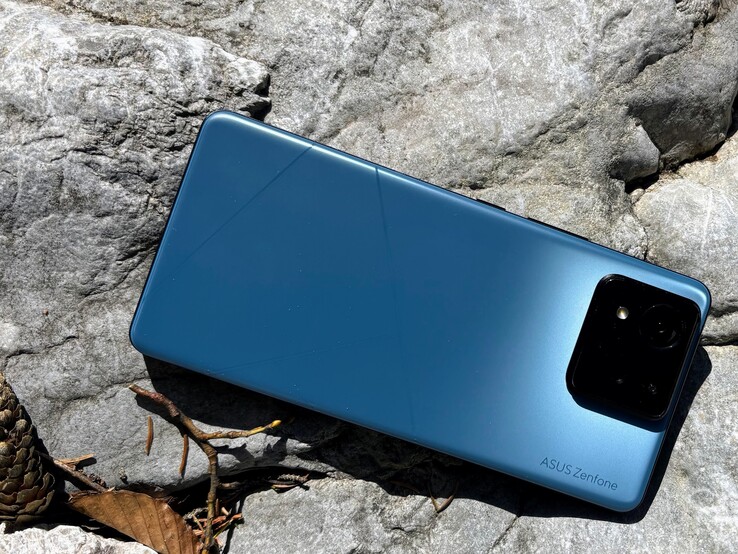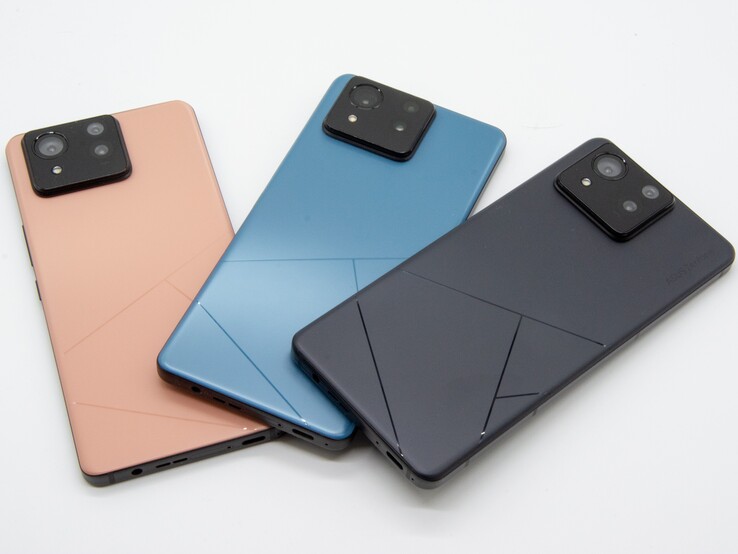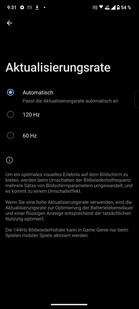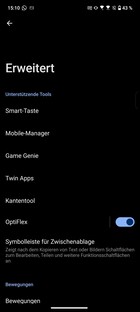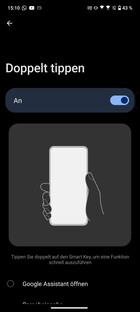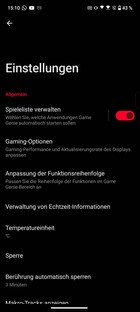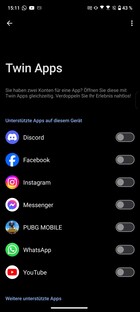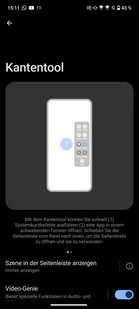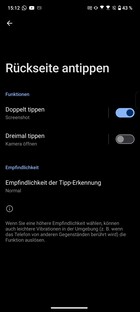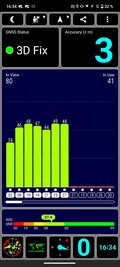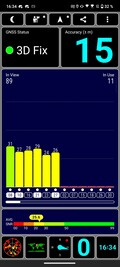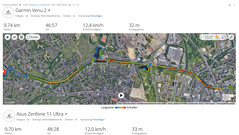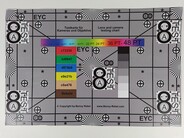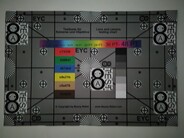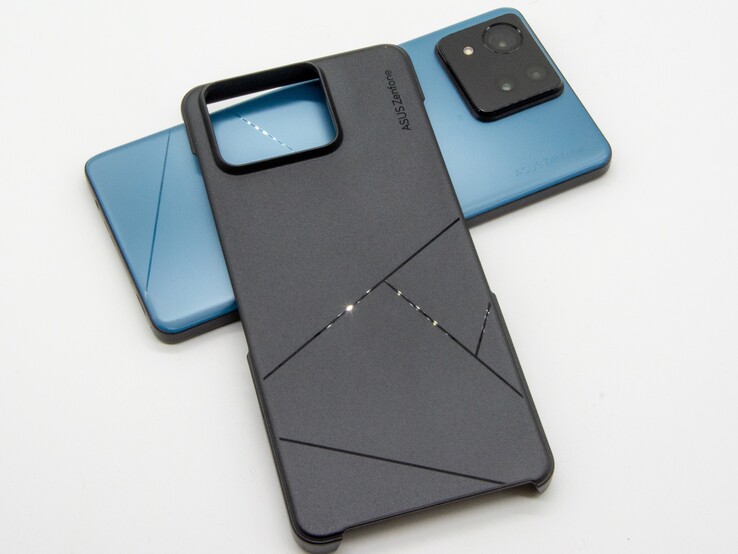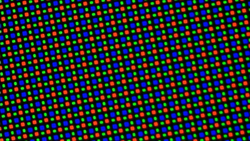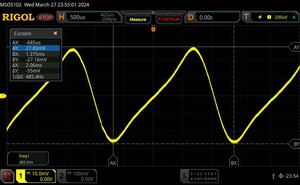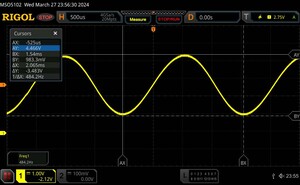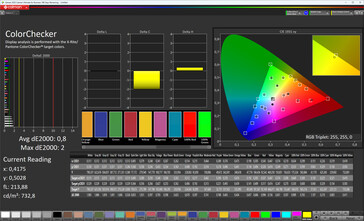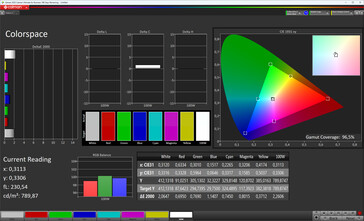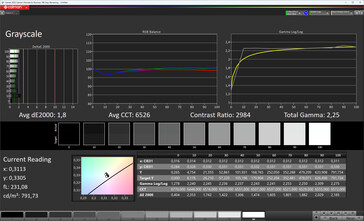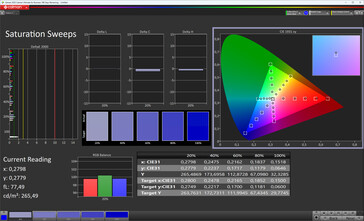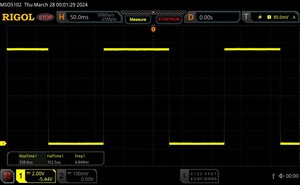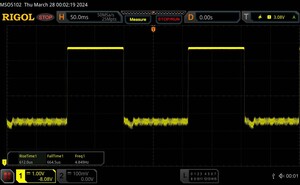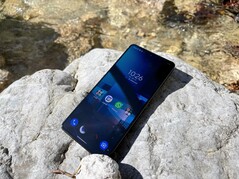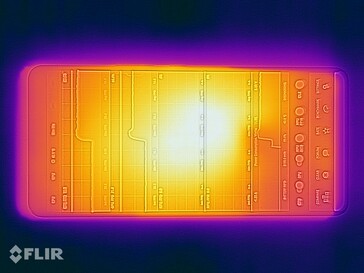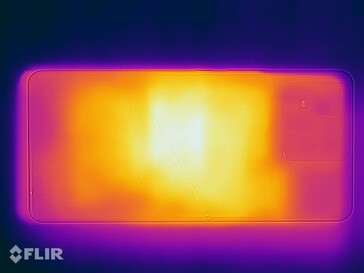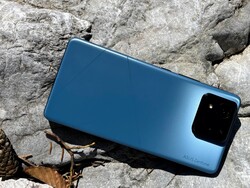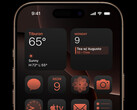Asus Zenfone 11 Ultra smartphone review - Suddenly grown up
In recent years, Asus' Zenfone series has always been a guarantor of flagship performance within compact devices. In 2024, the manufacturer has ditched this concept. The Zenfone 11 has had the suffix Ultra added to its name, and it has grown a lot. While the Zenfone 10 had a display diagonal of 5.9 inches, the new Zenfone 11 Ultra measures in at 6.78 inches.
You can get the Zenfone 11 Ultra in two versions: with 12 GB RAM and 256 GB storage, or with 16 GB RAM and 512 GB storage. Furthermore, there are four colors available: black, gray, blue and orange. Our test device is blue and features the larger storage configuration.
Possible competitors compared
Rating | Date | Model | Weight | Drive | Size | Resolution | Price |
|---|---|---|---|---|---|---|---|
| 88.1 % v7 (old) | 04 / 2024 | Asus Zenfone 11 Ultra SD 8 Gen 3, Adreno 750 | 224 g | 512 GB UFS 4.0 Flash | 6.78" | 2400x1080 | |
| 88.9 % v7 (old) | 11 / 2023 | Google Pixel 8 Tensor G3, Mali-G715 MP7 | 187 g | 128 GB UFS 3.1 Flash | 6.20" | 2400x1080 | |
| 89.8 % v7 (old) | 03 / 2024 | Samsung Galaxy S24+ Exynos 2400, Xclipse 940 | 196 g | 512 GB UFS 4.0 Flash | 6.70" | 3120x1440 | |
| 89.8 % v7 (old) | 01 / 2024 | Xiaomi 14 SD 8 Gen 3, Adreno 750 | 193 g | 256 GB UFS 4.0 Flash | 6.36" | 2670x1200 | |
| 89.7 % v7 (old) | 11 / 2023 | Apple iPhone 15 Plus A16, A16 GPU 5-Core | 201 g | 128 GB NVMe | 6.70" | 2796x1290 | |
| 88.7 % v7 (old) | 07 / 2023 | Asus Zenfone 10 SD 8 Gen 2, Adreno 740 | 172 g | 512 GB UFS 4.0 Flash | 5.90" | 2400x1080 |
Case - Asus relies on glass and metal
The Zenfone 11 Ultra's frame is made from metal. Its display and back are protected by glass. Gorilla Glass Victus 2 is installed over the display, and the manufacturer has not named which type is used on the back. The display is straight and the frame is very angular.
The smartphone is IP68-certified against dust and water. The placement of its USB port is a little unusual. It doesn't sit in the middle of the bottom of the case but rather further left. Its build quality is good. The device can barely be twisted. During our test phase, we never noted any scratches. The buttons have a good pressure point but the volume rocker wobbles a little.
The camera module protrudes quite a bit out of the back and is positioned very high up. As a result, the device sits securely on the table and only wobbles when inputs are made high up on the display. The decor on the back is only visible—you can't feel it.
Connectivity - The Zenfone 11 Ultra has an audio jack
Even as a flagship, the Asus Zenfone 11 Ultra still features a 3.5-mm audio jack. However, its storage cannot be expanded. NFC is on board, as is dual-SIM support. Unfortunately, the USB-C connection only supports USB 2.0. In combination with a Samsung 980 Pro hard drive, we measured transfer speeds of 31.79 MB/s. ExFAT and NTFS are supported for transferring data onto external storage devices.
Software - The Zenfone 11 Ultra with short support
The Asus Zenfone 11 Ultra comes delivered with Android 14. Its UI hasn't been changed too much compared to stock Android. When setting up the phone, you can even choose whether you would like to install the Asus UI or stock Android.
Ex works, the phone comes mostly with software from Asus and Google—it only has third-party apps from Meta installed. After setting the phone up, 21 GB of its storage is taken up. The smartphone features a high-performance mode that is automatically activated when gaming or performing benchmarks.
Asus only states a short time period when it comes to update delivery. The Zenfone 11 Ultra is set to receive two large Android updates and four years of security patches. At the time of testing (April 2024), the smartphone still ran with the version from December 2023.
The manufacturer offers a range of additional options, such as being able to assign the phone's buttons special features—plus, you can also activate commands by tapping the back of the device. Moreover, several apps support using two user profiles at the same time. The "edge tool" is a short menu which gives you quick access to various apps.
Furthermore, Asus advertizes a range of AI functions. The smartphone will supposedly receive a live translator function for telephone calls, a translator for voice recordings as well as AI-generated wallpaper. However, these three functions are still in the beta phase. The phone already features an AI-supported noise suppression and AI-assisted search function.
Communication and GNSS - The Zenfone 11 Ultra is WiFi-7 ready
The Asus Zenfone 11 Ultra supports Wi-Fi 7, so this includes the 6 GHz band. However, in combination with our reference router, the Asus ROG Rapture GT-AXE11000, the smartphone showed significant connectivity fluctuations. Its transmission rates were also lower than those of its predecessor, the Zenfone 10.
The Zenfone 11 Ultra is also 5G-ready. The global version supports 20 5G bands and 25 LTE bands. This ensures good network coverage even when travelling. The Zenfone 11 Ultra is dual SIM-capable using two physical SIM cards, whereas eSIMs are not supported.
| Networking | |
| Asus Zenfone 11 Ultra | |
| iperf3 receive AXE11000 | |
| iperf3 transmit AXE11000 | |
| iperf3 transmit AXE11000 6GHz | |
| iperf3 receive AXE11000 6GHz | |
| Google Pixel 8 | |
| iperf3 receive AXE11000 | |
| iperf3 transmit AXE11000 | |
| iperf3 transmit AXE11000 6GHz | |
| iperf3 receive AXE11000 6GHz | |
| Samsung Galaxy S24+ | |
| iperf3 receive AXE11000 | |
| iperf3 transmit AXE11000 | |
| iperf3 transmit AXE11000 6GHz | |
| iperf3 receive AXE11000 6GHz | |
| Xiaomi 14 | |
| iperf3 receive AXE11000 | |
| iperf3 transmit AXE11000 | |
| iperf3 transmit AXE11000 6GHz | |
| iperf3 receive AXE11000 6GHz | |
| Apple iPhone 15 Plus | |
| iperf3 receive AXE11000 | |
| iperf3 transmit AXE11000 | |
| Asus Zenfone 10 | |
| iperf3 transmit AXE11000 6GHz | |
| iperf3 receive AXE11000 6GHz | |
| Average of class Smartphone | |
| iperf3 receive AXE11000 | |
| iperf3 transmit AXE11000 | |
| iperf3 transmit AXE11000 6GHz | |
| iperf3 receive AXE11000 6GHz | |
All common satellite systems are supported by the Zenfone 11 Ultra in dual-band mode. We tested its accuracy on a bike trip. Its results were good and routes were recorded precisely by the smartphone. It takes a while to establish a reliable connection indoors, on the other hand.
Telephone features and call quality - AI noise suppression on the Zenfone
Asus uses its own telephone app on the Zenfone 11 Ultra. The software is structured clearly and—apart from the AI-assisted noise suppression—it doesn't feature any additional functions. The Zenfone doesn't offer any special features during calls. The user's voice is transmitted clearly and we noted no background noise. The device gets nice and loud when the loudspeaker is used and ambient noise is filtered out well.
Cameras - The Zenfone 11 Ultra with a triple setup
The Zenfone 11 Ultra features one lens more on the back than the Zenfone 10. The new addition is its 32-MPix camera with a 3x optical zoom and OIS. It complements the 50 MPix main camera (IMX 890) with gimbal stabilization and the 12.5 MPix ultra-wide-angle camera.
The smartphone has a pro mode where you can control focus, exposure time, ISO and white balance manually. You can record video at a maximum of 4K and 24fps using the main camera, and at 4K and 40fps using the ultra-wide-angle lens. Furthermore, there are modes for slow-motion, time-lapse and portrait videos.
The phone has a 32-MPix lens installed on the front. It uses pixel binning, resulting in a resolution of 8 MPix. It can record video at a maximum of FHD and 30fps. In total, its picture and video quality is good. Its video stabilization is particularly successful but its sound recordings have a bit of background noise.
The photos taken during our test look natural but in comparison to the other flagships, they are missing a little sharpness. In low-light conditions, the software lightens subjects quite a bit, which unfortunately leads to considerable amounts of noise.
Image comparison
Choose a scene and navigate within the first image. One click changes the position on touchscreens. One click on the zoomed-in image opens the original in a new window. The first image shows the scaled photograph of the test device.
RabbitLakeUltra-wide angle5x zoomLow light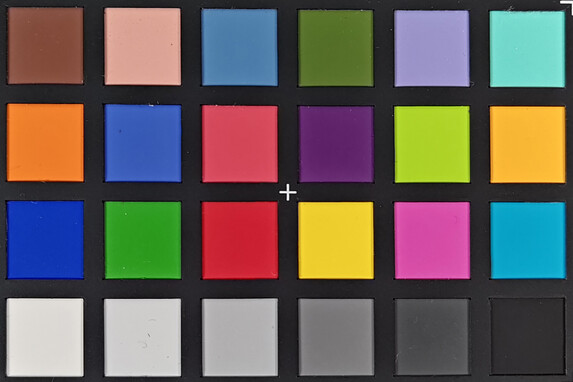

Accessories and warranty - Asus includes a case but not a power supply
Input devices & operation - Unlock the Zenfone 11 Ultra quickly
The Zenfone 11 Ultra doesn't come with a screen protector preinstalled. The panel is nice and smooth and inputs are recognized reliably right into the corners. For games, the phone supports a touch sampling rate of up to 144 Hz and when used normally, it scans the screen for inputs at up to 120 Hz. You can enhance the display's sensitivity by activating a so-called glove mode.
You can unlock the phone via 2D facial recognition or an optical fingerprint sensor which is built into the display. Both work very reliably and quickly. You can skip the lock screen entirely. The phone's vibration motor made a good impression, too; it is nice and quiet and crisp.
Asus uses Google's keyboard which works reliably. Due to the device's large size, it is a little more difficult to use the device with one hand compared to its predecessor. It supports a one-handed mode.
Display - The Zenfone 11 Ultra gets really bright
The Zenfone 11 Ultra is fitted with a 6.78-inch AMOLED display with a refresh rate between 1 and 120 Hz in normal use. You can manually set the rate to 60 or 120 Hz. During our measurements, the panel also showed an impressive maximum brightness level.
We noted an average brightness of 1673.6 cd/m², resulting in the Zenfone 11 Ultra surpassing well-known competitors such as the Samsung Galaxy S24+ and the iPhone 15 Plus. It gets twice as bright as its predecessor, the Zenfone 10. During the APL18 and HDR measurements, the panel even reached 2,409 and 2,458 nits, which means it nearly reaches the 2,500 cd/m² as promised by the manufacturer. Furthermore, its illumination is even.
During our measurements, we noted some screen flickering at a frequency of 486 Hz. The Zenfone 11 Ultra offers a special screen mode that reduces the flickering at low brightness levels and when we measured this, it resulted in a much lower amplitude. You can select an always-on display within the UI. However, it isn't a true AoD, as it switches off after several minutes.
| |||||||||||||||||||||||||
Brightness Distribution: 98 %
Center on Battery: 1664 cd/m²
Contrast: ∞:1 (Black: 0 cd/m²)
ΔE ColorChecker Calman: 0.8 | ∀{0.5-29.43 Ø4.78}
ΔE Greyscale Calman: 1.8 | ∀{0.09-98 Ø5}
96.5% sRGB (Calman 2D)
Gamma: 2.25
CCT: 6526 K
| Asus Zenfone 11 Ultra AMOLED, 2400x1080, 6.8" | Google Pixel 8 OLED, 2400x1080, 6.2" | Samsung Galaxy S24+ AMOLED, 3120x1440, 6.7" | Xiaomi 14 OLED, 2670x1200, 6.4" | Apple iPhone 15 Plus OLED, 2796x1290, 6.7" | Asus Zenfone 10 AMOLED, 2400x1080, 5.9" | |
|---|---|---|---|---|---|---|
| Screen | -33% | -80% | -27% | -27% | -89% | |
| Brightness middle (cd/m²) | 1664 | 1450 -13% | 1358 -18% | 1043 -37% | 1044 -37% | 797 -52% |
| Brightness (cd/m²) | 1674 | 1410 -16% | 1358 -19% | 1052 -37% | 1040 -38% | 789 -53% |
| Brightness Distribution (%) | 98 | 92 -6% | 92 -6% | 96 -2% | 99 1% | 93 -5% |
| Black Level * (cd/m²) | ||||||
| Colorchecker dE 2000 * | 0.8 | 1.1 -38% | 3 -275% | 1.1 -38% | 1.2 -50% | 3.64 -355% |
| Colorchecker dE 2000 max. * | 2 | 4.2 -110% | 4.4 -120% | 2.8 -40% | 2.4 -20% | 1.92 4% |
| Greyscale dE 2000 * | 1.8 | 2.1 -17% | 2.5 -39% | 1.9 -6% | 2.1 -17% | 3.1 -72% |
| Gamma | 2.25 98% | 2.24 98% | 1.98 111% | 2.23 99% | 2.14 103% | 2.238 98% |
| CCT | 6526 100% | 6584 99% | 6656 98% | 6740 96% | 6411 101% | 6531 100% |
* ... smaller is better
Screen Flickering / PWM (Pulse-Width Modulation)
| Screen flickering / PWM detected | 486 Hz | ||
The display backlight flickers at 486 Hz (worst case, e.g., utilizing PWM) . The frequency of 486 Hz is relatively high, so most users sensitive to PWM should not notice any flickering. However, there are reports that some users are still sensitive to PWM at 500 Hz and above, so be aware. In comparison: 53 % of all tested devices do not use PWM to dim the display. If PWM was detected, an average of 8118 (minimum: 5 - maximum: 343500) Hz was measured. | |||
Measurement series with fixed zoom level and different brightness settings
The Zenfone 11 Ultra's display is well-calibrated; its color deviations are mostly not perceivable by the naked eye. Only its grayscale deviations are slightly larger.
Display Response Times
| ↔ Response Time Black to White | ||
|---|---|---|
| 0.69 ms ... rise ↗ and fall ↘ combined | ↗ 0.338 ms rise | |
| ↘ 0.3525 ms fall | ||
| The screen shows very fast response rates in our tests and should be very well suited for fast-paced gaming. In comparison, all tested devices range from 0.1 (minimum) to 240 (maximum) ms. » 1 % of all devices are better. This means that the measured response time is better than the average of all tested devices (20.2 ms). | ||
| ↔ Response Time 50% Grey to 80% Grey | ||
| 1.28 ms ... rise ↗ and fall ↘ combined | ↗ 0.612 ms rise | |
| ↘ 0.6645 ms fall | ||
| The screen shows very fast response rates in our tests and should be very well suited for fast-paced gaming. In comparison, all tested devices range from 0.165 (minimum) to 636 (maximum) ms. » 5 % of all devices are better. This means that the measured response time is better than the average of all tested devices (31.6 ms). | ||
Performance - The Zenfone 11 Ultra delivers great performance
When it comes to the Zenfone 11 Ultra, Asus relies on the latest top-of-the-range processors from Qualcomm, namely the Snapdragon 8 Gen 3. Our test model is additionally fitted with 16 GB RAM. As a result, the Zenfone completes everyday tasks just as fast as you would expect. Its system performance is buttery smooth and apps are opened quickly.
The Zenfone 11 Ultra didn't show a clear picture in the benchmarks. While it came ahead during Geekbench 5 and 6 as well as during PCMark, it performed worse in CrossMark, for example. Overall, however, its performance is very good.
The Asus phone did impressively well during the storage benchmark. The Zenfone came out on top with its UFS-4 storage and compared to the Google Pixel 8 in particular, it sometimes offered twice the speeds.
| UL Procyon AI Inference for Android - Overall Score NNAPI | |
| Google Pixel 8 | |
| Average of class Smartphone (3769 - 81594, n=137, last 2 years) | |
| Xiaomi 14 | |
| Average Qualcomm Snapdragon 8 Gen 3 (11487 - 18370, n=22) | |
| Asus Zenfone 10 | |
| Asus Zenfone 11 Ultra | |
| Samsung Galaxy S24+ | |
The Zenfone 11 Ultra is equipped with an Adreno 750 as its graphics unit. As a result, the Zenfone came up trumps amongst the comparison devices during the 3DMark test. During GFX Bench, on the other hand, quite a few of its competitors did better and all-in-all, the results of this benchmark were a little puzzling. Its off-screen values are conspicuously low and its on-screen values are consistently high.
At the same time, the phone's refresh result must be increased manually in order to achieve decent results. Current games are no problem for the smartphone. PUBG Mobile runs smoothly using the settings Ultra HDR and the picture rate Ultra. Our test device is only DRM Widevine Level 3 certified, but the retail versions should have the Level 1 certificate.
GFXBench (DX / GLBenchmark) 2.7: T-Rex Onscreen | 1920x1080 T-Rex Offscreen
GFXBench 3.0: on screen Manhattan Onscreen OGL | 1920x1080 1080p Manhattan Offscreen
GFXBench 3.1: on screen Manhattan ES 3.1 Onscreen | 1920x1080 Manhattan ES 3.1 Offscreen
GFXBench: on screen Car Chase Onscreen | 1920x1080 Car Chase Offscreen | on screen Aztec Ruins High Tier Onscreen | 2560x1440 Aztec Ruins High Tier Offscreen | on screen Aztec Ruins Normal Tier Onscreen | 1920x1080 Aztec Ruins Normal Tier Offscreen | 3840x2160 4K Aztec Ruins High Tier Offscreen
| 3DMark / Wild Life Extreme Unlimited | |
| Asus Zenfone 11 Ultra | |
| Xiaomi 14 | |
| Samsung Galaxy S24+ | |
| Asus Zenfone 10 | |
| Apple iPhone 15 Plus | |
| Google Pixel 8 | |
| 3DMark / Wild Life Extreme | |
| Asus Zenfone 11 Ultra | |
| Xiaomi 14 | |
| Samsung Galaxy S24+ | |
| Asus Zenfone 10 | |
| Apple iPhone 15 Plus | |
| Google Pixel 8 | |
| 3DMark / Wild Life Unlimited Score | |
| Asus Zenfone 11 Ultra | |
| Xiaomi 14 | |
| Samsung Galaxy S24+ | |
| Apple iPhone 15 Plus | |
| Google Pixel 8 | |
| 3DMark / Wild Life Score | |
| Google Pixel 8 | |
| Xiaomi 14 | |
| 3DMark / Solar Bay Score | |
| Samsung Galaxy S24+ | |
| Asus Zenfone 11 Ultra | |
| Xiaomi 14 | |
| Apple iPhone 15 Plus | |
| 3DMark / Solar Bay Unlimited Score | |
| Samsung Galaxy S24+ | |
| Asus Zenfone 11 Ultra | |
| Xiaomi 14 | |
| Apple iPhone 15 Plus | |
| 3DMark / Sling Shot Extreme (ES 3.1) Unlimited Physics | |
| Asus Zenfone 11 Ultra | |
| Xiaomi 14 | |
| Samsung Galaxy S24+ | |
| Google Pixel 8 | |
| 3DMark / Sling Shot Extreme (ES 3.1) Unlimited Graphics | |
| Asus Zenfone 11 Ultra | |
| Xiaomi 14 | |
| Samsung Galaxy S24+ | |
| Google Pixel 8 | |
| 3DMark / Sling Shot Extreme (ES 3.1) Unlimited | |
| Asus Zenfone 11 Ultra | |
| Xiaomi 14 | |
| Samsung Galaxy S24+ | |
| Google Pixel 8 | |
| GFXBench (DX / GLBenchmark) 2.7 / T-Rex Onscreen | |
| Xiaomi 14 | |
| Asus Zenfone 10 | |
| Google Pixel 8 | |
| Samsung Galaxy S24+ | |
| Asus Zenfone 11 Ultra | |
| Apple iPhone 15 Plus | |
| GFXBench (DX / GLBenchmark) 2.7 / T-Rex Offscreen | |
| Xiaomi 14 | |
| Asus Zenfone 10 | |
| Apple iPhone 15 Plus | |
| Samsung Galaxy S24+ | |
| Google Pixel 8 | |
| Asus Zenfone 11 Ultra | |
| GFXBench 3.0 / Manhattan Onscreen OGL | |
| Xiaomi 14 | |
| Asus Zenfone 10 | |
| Samsung Galaxy S24+ | |
| Asus Zenfone 11 Ultra | |
| Google Pixel 8 | |
| Apple iPhone 15 Plus | |
| GFXBench 3.0 / 1080p Manhattan Offscreen | |
| Xiaomi 14 | |
| Asus Zenfone 10 | |
| Samsung Galaxy S24+ | |
| Apple iPhone 15 Plus | |
| Asus Zenfone 11 Ultra | |
| Google Pixel 8 | |
| GFXBench 3.1 / Manhattan ES 3.1 Onscreen | |
| Xiaomi 14 | |
| Asus Zenfone 10 | |
| Samsung Galaxy S24+ | |
| Asus Zenfone 11 Ultra | |
| Google Pixel 8 | |
| Apple iPhone 15 Plus | |
| GFXBench 3.1 / Manhattan ES 3.1 Offscreen | |
| Xiaomi 14 | |
| Samsung Galaxy S24+ | |
| Asus Zenfone 10 | |
| Apple iPhone 15 Plus | |
| Google Pixel 8 | |
| Asus Zenfone 11 Ultra | |
| GFXBench / Car Chase Onscreen | |
| Asus Zenfone 10 | |
| Xiaomi 14 | |
| Samsung Galaxy S24+ | |
| Apple iPhone 15 Plus | |
| Google Pixel 8 | |
| Asus Zenfone 11 Ultra | |
| GFXBench / Car Chase Offscreen | |
| Xiaomi 14 | |
| Samsung Galaxy S24+ | |
| Asus Zenfone 10 | |
| Apple iPhone 15 Plus | |
| Google Pixel 8 | |
| Asus Zenfone 11 Ultra | |
| GFXBench / Aztec Ruins High Tier Onscreen | |
| Asus Zenfone 11 Ultra | |
| Xiaomi 14 | |
| Asus Zenfone 10 | |
| Samsung Galaxy S24+ | |
| Google Pixel 8 | |
| Apple iPhone 15 Plus | |
| GFXBench / Aztec Ruins High Tier Offscreen | |
| Xiaomi 14 | |
| Samsung Galaxy S24+ | |
| Asus Zenfone 10 | |
| Apple iPhone 15 Plus | |
| Asus Zenfone 11 Ultra | |
| Google Pixel 8 | |
| GFXBench / Aztec Ruins Normal Tier Onscreen | |
| Xiaomi 14 | |
| Asus Zenfone 11 Ultra | |
| Asus Zenfone 10 | |
| Samsung Galaxy S24+ | |
| Google Pixel 8 | |
| Apple iPhone 15 Plus | |
| GFXBench / Aztec Ruins Normal Tier Offscreen | |
| Xiaomi 14 | |
| Samsung Galaxy S24+ | |
| Asus Zenfone 10 | |
| Apple iPhone 15 Plus | |
| Google Pixel 8 | |
| Asus Zenfone 11 Ultra | |
| GFXBench / 4K Aztec Ruins High Tier Offscreen | |
| Xiaomi 14 | |
| Samsung Galaxy S24+ | |
| Asus Zenfone 11 Ultra | |
| Asus Zenfone 10 | |
| Apple iPhone 15 Plus | |
| Google Pixel 8 | |
| Jetstream 2 - 2.0 Total Score | |
| Apple iPhone 15 Plus (Safari Mobile 17) | |
| Xiaomi 14 (Chrome 120.0.6099.210) | |
| Asus Zenfone 11 Ultra (Chrome 123) | |
| Average Qualcomm Snapdragon 8 Gen 3 (64.1 - 241, n=24) | |
| Average of class Smartphone (23.8 - 387, n=153, last 2 years) | |
| Samsung Galaxy S24+ (Chrome 121) | |
| Asus Zenfone 10 (Chrome 114) | |
| Google Pixel 8 (chrome 116) | |
| WebXPRT 4 - Overall | |
| Xiaomi 14 (Chrome 120.0.6099.210) | |
| Samsung Galaxy S24+ (Chrome 121) | |
| Average Qualcomm Snapdragon 8 Gen 3 (69 - 212, n=22) | |
| Asus Zenfone 11 Ultra (Chrome 123) | |
| Average of class Smartphone (27 - 306, n=147, last 2 years) | |
| Asus Zenfone 10 (Chrome 114) | |
| Google Pixel 8 (chrome 116) | |
| Octane V2 - Total Score | |
| Apple iPhone 15 Plus (Safari Mobile 17) | |
| Xiaomi 14 (Chrome 120.0.6099.210) | |
| Samsung Galaxy S24+ (Chrome 121) | |
| Average Qualcomm Snapdragon 8 Gen 3 (25953 - 75238, n=27) | |
| Average of class Smartphone (2228 - 121337, n=200, last 2 years) | |
| Asus Zenfone 11 Ultra (Chrome 123) | |
| Google Pixel 8 (chrome 116) | |
| Asus Zenfone 10 (Chrome 114) | |
| Mozilla Kraken 1.1 - Total | |
| Average of class Smartphone (257 - 28190, n=155, last 2 years) | |
| Asus Zenfone 10 (Chrome 114) | |
| Google Pixel 8 (chrome 116) | |
| Asus Zenfone 11 Ultra (Chrome 123) | |
| Average Qualcomm Snapdragon 8 Gen 3 (510 - 2066, n=25) | |
| Samsung Galaxy S24+ (Chrome 121) | |
| Xiaomi 14 (Chrome 120.0.6099.210) | |
| Apple iPhone 15 Plus (Safari Mobile 17) | |
* ... smaller is better
| Asus Zenfone 11 Ultra | Google Pixel 8 | Samsung Galaxy S24+ | Xiaomi 14 | Average 512 GB UFS 4.0 Flash | Average of class Smartphone | |
|---|---|---|---|---|---|---|
| PCMark for Android | -67% | -42% | -31% | -16% | -35% | |
| Storage 2.0 seq. read int. (MB/s) | 3168 ? | 1627 ? -49% | 2327 ? -27% | 2452 ? -23% | 2562 ? -19% | 1708 ? -46% |
| Storage 2.0 seq. write int. (MB/s) | 3112 ? | 570 ? -82% | 1201 ? -61% | 2817 ? -9% | 2502 ? -20% | 1576 ? -49% |
| Storage 2.0 random read int. (MB/s) | 62.1 ? | 16 ? -74% | 50 ? -19% | 29.6 ? -52% | 50.7 ? -18% | 42.7 ? -31% |
| Storage 2.0 random write int. (MB/s) | 120.3 ? | 39.7 ? -67% | 66.7 ? -45% | 62.9 ? -48% | 79.5 ? -34% | 69.5 ? -42% |
| Storage 2.0 (Points) | 63116 ? | 24572 ? -61% | 25276 ? -60% | 49601 ? -21% | 69566 ? 10% | 58112 ? -8% |
Emissions - Asus keeps heat within limits
Temperature - The Snapdragon gets warm but not hot
The Asus Zenfone 11 Ultra always remains nice and cool in daily use. It also gets warm during intensive gaming sessions, but not hot. Under extreme load during the Burnout benchmark, we measured a maximum of 43.2 degrees Celsius on the top and 43.9 degrees on the bottom.
Throttling set in during the stability test due to the heat, but roughly at the same level as the comparison devices.
(±) The maximum temperature on the upper side is 43.2 °C / 110 F, compared to the average of 35.2 °C / 95 F, ranging from 21.9 to 247 °C for the class Smartphone.
(±) The bottom heats up to a maximum of 43.9 °C / 111 F, compared to the average of 34 °C / 93 F
(+) In idle usage, the average temperature for the upper side is 27.7 °C / 82 F, compared to the device average of 32.9 °C / 91 F.
3DMark Wild Life Stress Test
| 3DMark | |
| Wild Life Stress Test Stability | |
| Asus Zenfone 10 | |
| Google Pixel 8 | |
| Asus Zenfone 11 Ultra | |
| Samsung Galaxy S24+ | |
| Apple iPhone 15 Plus | |
| Wild Life Extreme Stress Test | |
| Asus Zenfone 10 | |
| Samsung Galaxy S24+ | |
| Google Pixel 8 | |
| Apple iPhone 15 Plus | |
| Asus Zenfone 11 Ultra | |
| Solar Bay Stress Test Stability | |
| Apple iPhone 15 Plus | |
| Xiaomi 14 | |
| Samsung Galaxy S24+ | |
| Asus Zenfone 11 Ultra | |
Speakers - Great stereo sound on the Zenfone 11 Ultra
The speakers in the Asus Zenfone 11 Ultra do a very good job. They are loud without sound getting distorted and they deliver balanced stereo sound. At high volumes, we noted some vibrations in the frame and on the back, but they were never distracting. Headphones can be connected to the Zenfone via an audio jack, but its signal-to-noise ratio is very low at 67.79 dBFS.
Bluetooth headphones could be paired without any problems during our test. The Zenfone 11 Ultra supports the following codecs: SBC, AAC, aptX, aptX HD, LDAC, aptX Adaptive audio, LC3 and Opus. The smartphone comes with an audio assistant preinstalled. This includes an equalizer that can be adjusted for individual end devices.
Asus Zenfone 11 Ultra audio analysis
(+) | speakers can play relatively loud (91.5 dB)
Bass 100 - 315 Hz
(-) | nearly no bass - on average 22.3% lower than median
(+) | bass is linear (5.3% delta to prev. frequency)
Mids 400 - 2000 Hz
(±) | reduced mids - on average 5.8% lower than median
(+) | mids are linear (5.5% delta to prev. frequency)
Highs 2 - 16 kHz
(±) | higher highs - on average 5.3% higher than median
(+) | highs are linear (3.4% delta to prev. frequency)
Overall 100 - 16.000 Hz
(±) | linearity of overall sound is average (18.3% difference to median)
Compared to same class
» 18% of all tested devices in this class were better, 9% similar, 73% worse
» The best had a delta of 11%, average was 35%, worst was 134%
Compared to all devices tested
» 39% of all tested devices were better, 8% similar, 53% worse
» The best had a delta of 4%, average was 24%, worst was 134%
Samsung Galaxy S24+ audio analysis
(+) | speakers can play relatively loud (92.1 dB)
Bass 100 - 315 Hz
(-) | nearly no bass - on average 22.3% lower than median
(+) | bass is linear (5.2% delta to prev. frequency)
Mids 400 - 2000 Hz
(±) | reduced mids - on average 6.5% lower than median
(+) | mids are linear (4.8% delta to prev. frequency)
Highs 2 - 16 kHz
(±) | higher highs - on average 5.6% higher than median
(+) | highs are linear (1.8% delta to prev. frequency)
Overall 100 - 16.000 Hz
(±) | linearity of overall sound is average (17.3% difference to median)
Compared to same class
» 11% of all tested devices in this class were better, 8% similar, 81% worse
» The best had a delta of 11%, average was 35%, worst was 134%
Compared to all devices tested
» 31% of all tested devices were better, 8% similar, 60% worse
» The best had a delta of 4%, average was 24%, worst was 134%
Battery life - Asus, you can do better
Power consumption - The Zenfone 11 Ultra has a high idle consumption
Asus has tuned the Snapdragon 8 Gen 3 inside the Zenfone 11 Ultra a little differently compared to other manufacturers. The Snapdragon in the Asus is less power-hungry under load, but its base consumption is high.
| Off / Standby | |
| Idle | |
| Load |
|
Key:
min: | |
| Asus Zenfone 11 Ultra 5500 mAh | Google Pixel 8 4575 mAh | Samsung Galaxy S24+ 4900 mAh | Xiaomi 14 4610 mAh | Apple iPhone 15 Plus 4383 mAh | Asus Zenfone 10 4300 mAh | Average Qualcomm Snapdragon 8 Gen 3 | Average of class Smartphone | |
|---|---|---|---|---|---|---|---|---|
| Power Consumption | -42% | -68% | -42% | -34% | -64% | -93% | -67% | |
| Idle Minimum * (Watt) | 0.85 | 0.56 34% | 0.43 49% | 0.51 40% | 0.71 16% | 0.9 -6% | 0.969 ? -14% | 0.848 ? -0% |
| Idle Average * (Watt) | 1.43 | 1.08 24% | 0.84 41% | 0.89 38% | 2.09 -46% | 1.1 23% | 1.721 ? -20% | 1.435 ? -0% |
| Idle Maximum * (Watt) | 1.55 | 1.17 25% | 0.95 39% | 0.92 41% | 2.11 -36% | 1.5 3% | 1.891 ? -22% | 1.621 ? -5% |
| Load Average * (Watt) | 3.34 | 8.01 -140% | 6.76 -102% | 9.08 -172% | 4.32 -29% | 7.6 -128% | 8.91 ? -167% | 6.99 ? -109% |
| Load Maximum * (Watt) | 3.53 | 8.89 -152% | 16.42 -365% | 9.11 -158% | 6.25 -77% | 11 -212% | 12.1 ? -243% | 11.3 ? -220% |
* ... smaller is better
Power consumption: Geekbench (150 cd/m²)
Power consumption: GFXBench (150 cd/m²)
Runtimes - The Zenfone can't live up to expectations
The Asus Zenfone 11 Ultra features ideal conditions for long battery runtimes: It has a 5,500 mAh battery and an AMOLED display with LTPO. In our realistic WiFi web surfing test, the Zenfone only ran out of battery after 16.5 hours. A good value in itself.
However, with the exception of the Google Pixel 8, all comparison devices lasted longer—although some of them are fitted with significantly smaller batteries. Asus states the phone supports fast charging at a maximum of 65 watts as well as Quick Charge 5.0. Unfortunately, no suitable power adapter is included. We achieved a maximum charging power of 32 watts when using an Anker Powerhouse 555. The Zenfone 11 Ultra took around 80 minutes to fully charge in the test. The Zenfone also supports Qi wireless charging at up to 15 watts.
| Battery runtime - WiFi v1.3 | |
| Asus Zenfone 11 Ultra | |
| Google Pixel 8 | |
| Samsung Galaxy S24+ | |
| Xiaomi 14 | |
| Apple iPhone 15 Plus | |
| Asus Zenfone 10 | |
Pros
Cons
Verdict - The Zenfone in large features highlights, but it doesn't come out on top
Asus has forged a new path with its Zenfone 11 Ultra. Its new size positively impacts the phone's display, battery life and speakers. It remains unknown whether installing the third camera was only possible due to there being more space on the back. However, Zenfone has also lost its unique selling point, opening the device up to much more competition.
The Zenfone 11 Ultra's super bright and well-balanced display is most impressive. Together with its truly good speakers, it offers a very pleasant audio-visual experience for videos as well as games. Its performance is beyond question: It is fitted with a top-league processor, RAM and storage, resulting in great working speeds.
You'll have to make some compromises when it comes to its camera: Although it shows great progress compared to its predecessor, it just can't compete with other top-of-the-range smartphones like the Google Pixel 8, Xiaomi 14 or the Apple iPhone 15 Plus when it comes to depicting details. Its photos are anything but bad, but they can't quite be assigned to the top smartphone class. Asus has to make up ground when it comes to updates, too. Google and Samsung both offer significantly longer support.
The Asus Zenfone 11 Ultra is a great smartphone without any real flaws. However, it has lost its unique selling point and it can't quite contend with the best when it comes to smaller details.
If you are on the hunt for a particularly compact high-end smartphone, then you should take a look at the Xiaomi 14 or the Samsung Galaxy S24. The Google Pixel 8 boasts a better camera and longer update support. Furthermore, it has already been on the market for quite a while, making it a lot cheaper.
Price and availability
The Zenfone 11 Ultra has an MRSP of US$899.99 and can be purchased via major online retailers such as Amazon.
Asus Zenfone 11 Ultra
- 04/22/2024 v7 (old)
Benedikt Winkel
Transparency
The selection of devices to be reviewed is made by our editorial team. The test sample was provided to the author as a loan by the manufacturer or retailer for the purpose of this review. The lender had no influence on this review, nor did the manufacturer receive a copy of this review before publication. There was no obligation to publish this review. As an independent media company, Notebookcheck is not subjected to the authority of manufacturers, retailers or publishers.
This is how Notebookcheck is testing
Every year, Notebookcheck independently reviews hundreds of laptops and smartphones using standardized procedures to ensure that all results are comparable. We have continuously developed our test methods for around 20 years and set industry standards in the process. In our test labs, high-quality measuring equipment is utilized by experienced technicians and editors. These tests involve a multi-stage validation process. Our complex rating system is based on hundreds of well-founded measurements and benchmarks, which maintains objectivity. Further information on our test methods can be found here.




